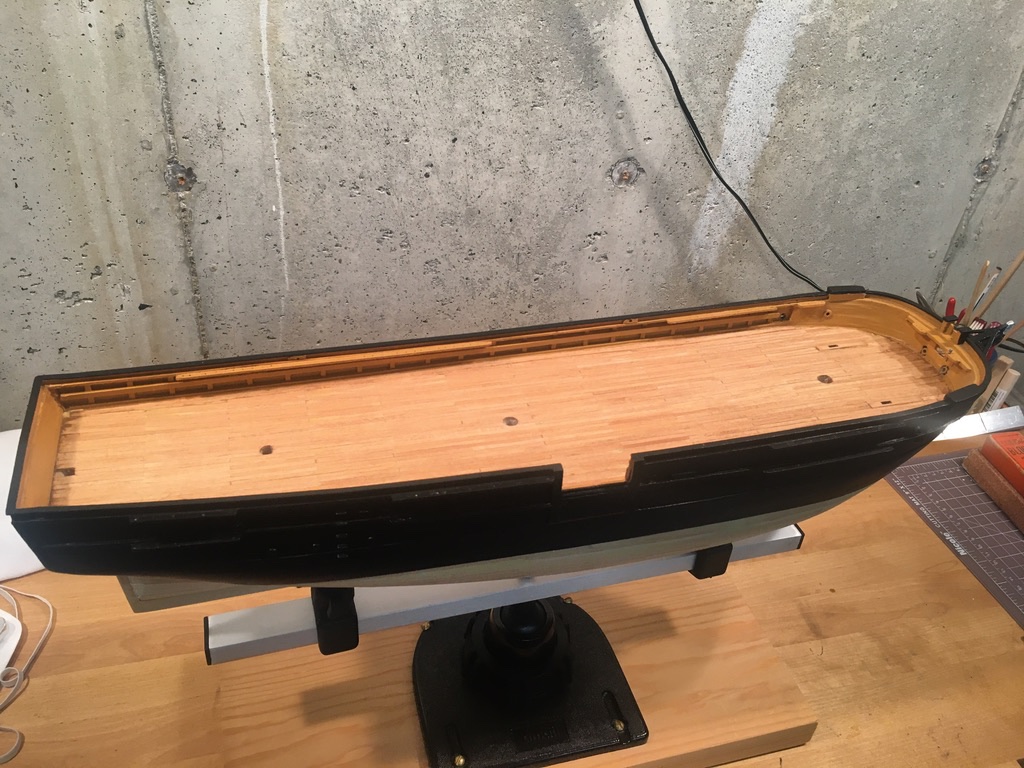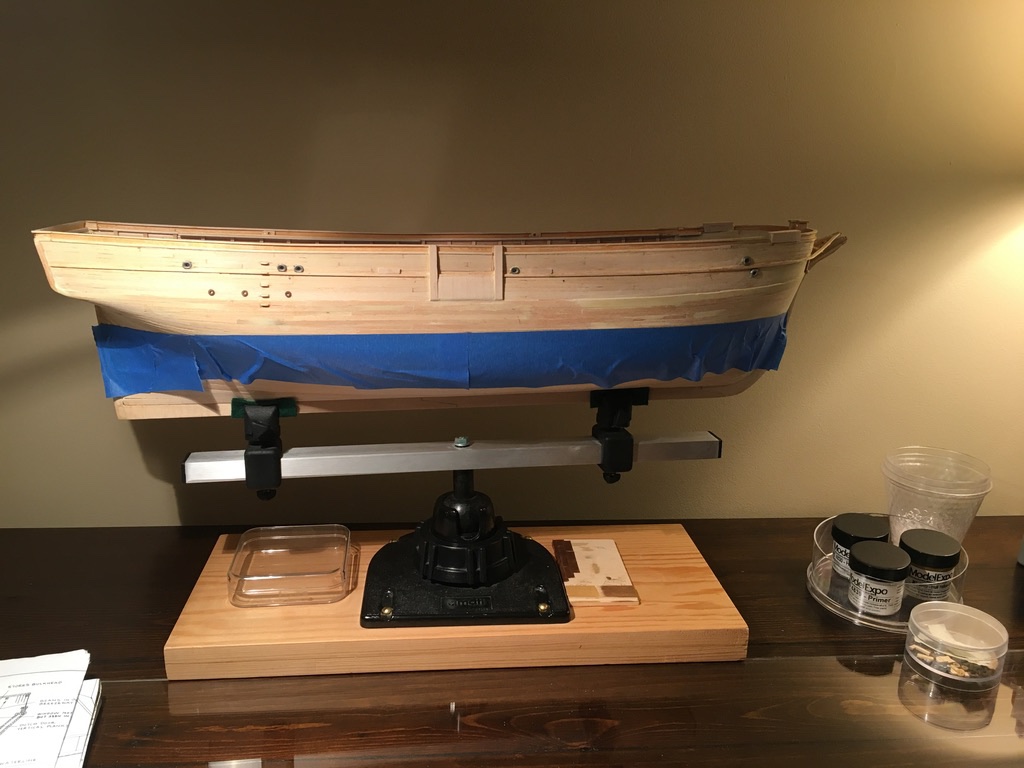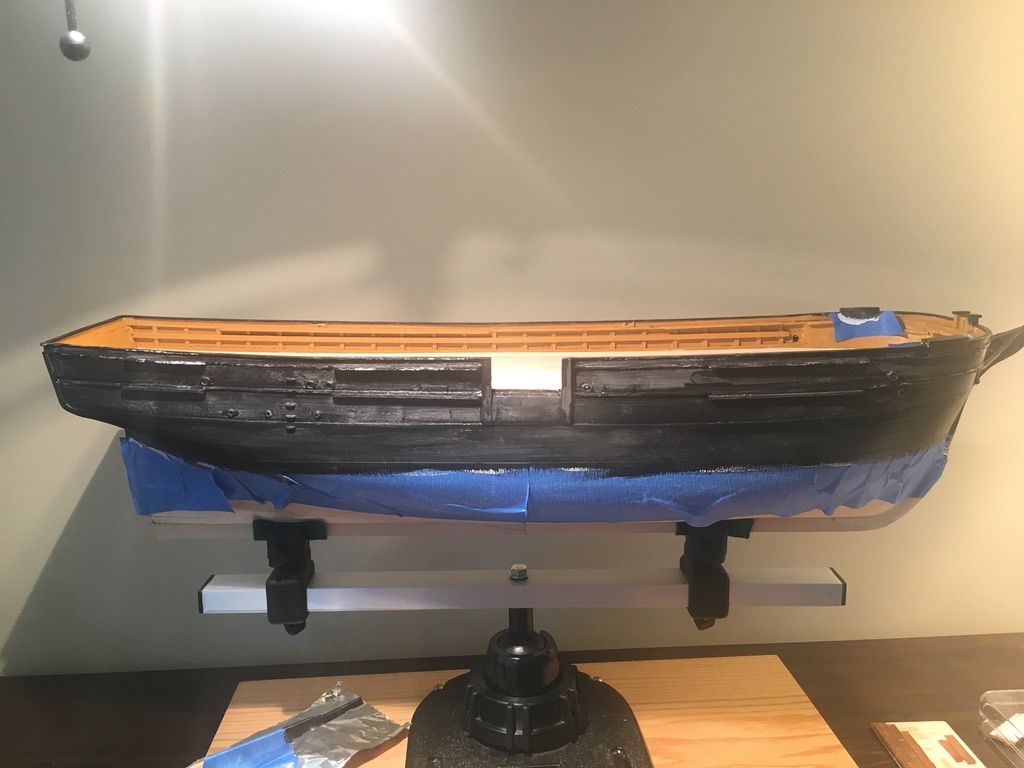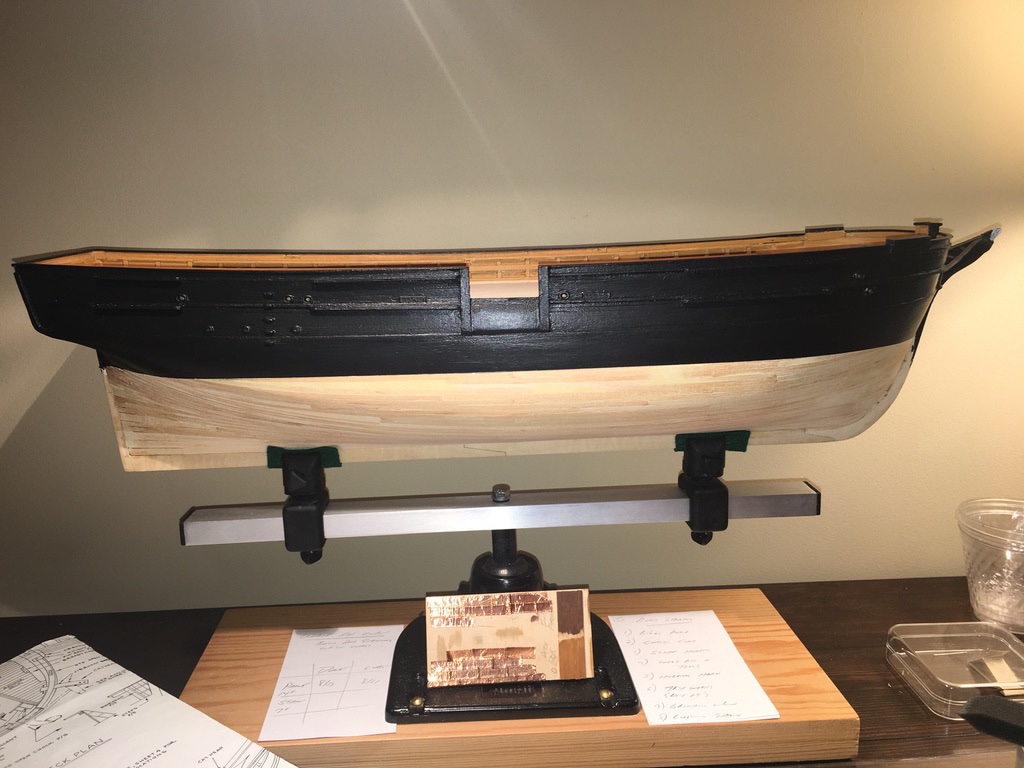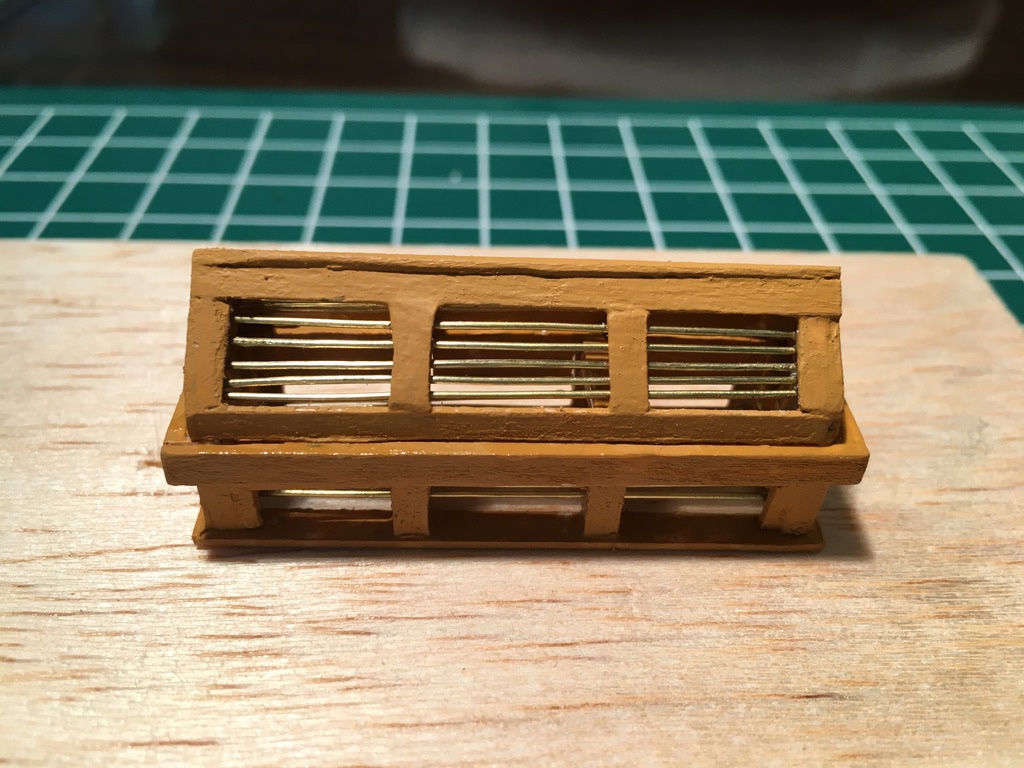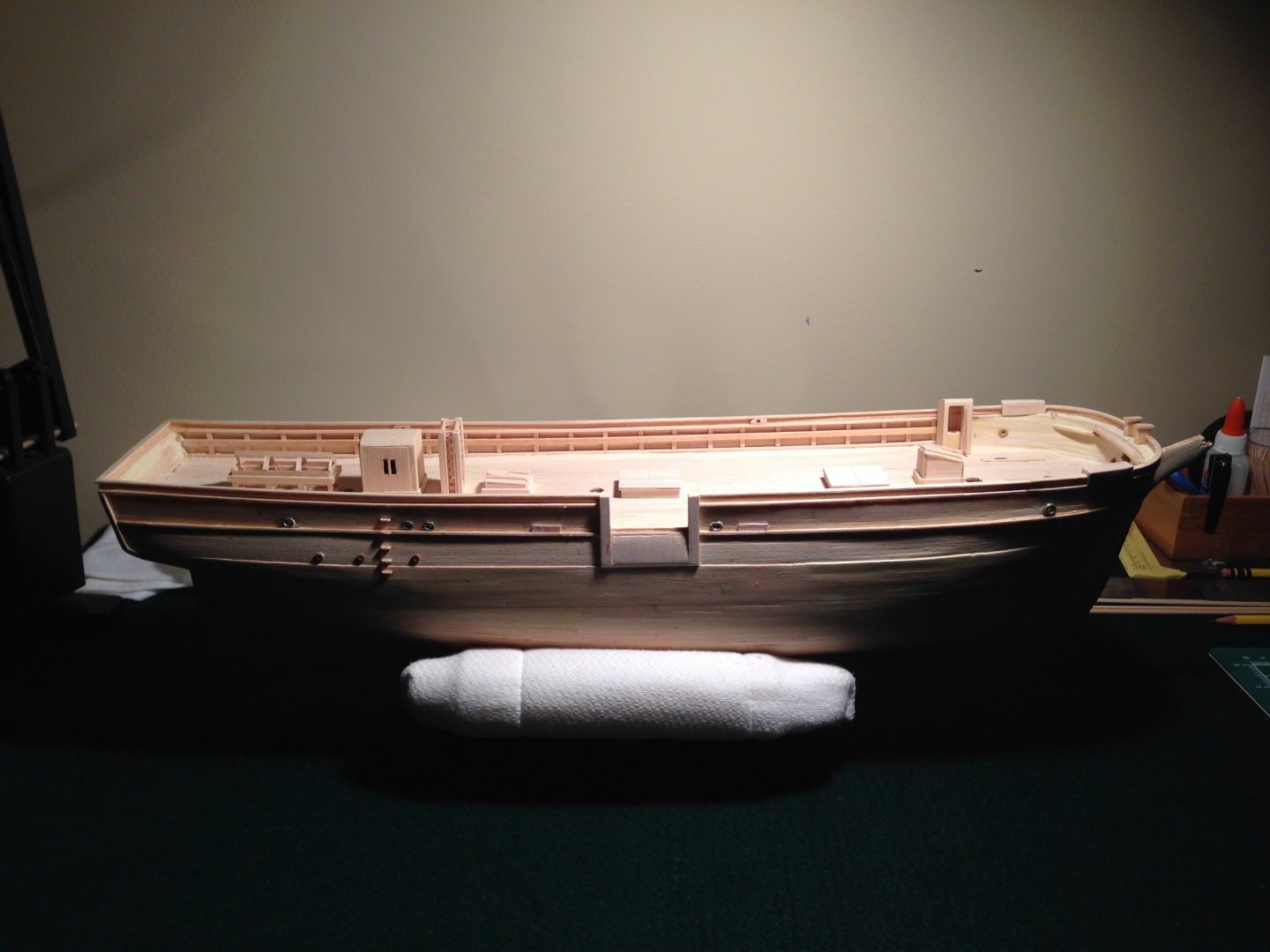-
Posts
25 -
Joined
-
Last visited
About DJC

Profile Information
-
Gender
Male
-
Location
MA
Recent Profile Visitors
-
DJC changed their profile photo
-
Hi Mark - nicely done! I am finishing up Bluenose and the Charles W Morgan both by Model Shipways I am thinking of the Jefferson Davis as my next ship and as I hav also built the Harvey (Artesania Latina) I am considering building this Admiralty style. Given that, I'd like to add tree nails (never done that before) - how did you do yours? Much thanks Dennis
- 32 replies
-
- Jefferson Davis
- Bluejacket Shipcrafters
-
(and 1 more)
Tagged with:
-
 GrandpaPhil reacted to a post in a topic:
Charles W Morgan by DJC - Model Shipways - 1:64
GrandpaPhil reacted to a post in a topic:
Charles W Morgan by DJC - Model Shipways - 1:64
-
 GrandpaPhil reacted to a post in a topic:
Charles W Morgan by DJC - Model Shipways - 1:64
GrandpaPhil reacted to a post in a topic:
Charles W Morgan by DJC - Model Shipways - 1:64
-
 Papa reacted to a post in a topic:
Charles W Morgan by DJC - Model Shipways - 1:64
Papa reacted to a post in a topic:
Charles W Morgan by DJC - Model Shipways - 1:64
-
 Landlubber Mike reacted to a post in a topic:
Charles W Morgan by DJC - Model Shipways - 1:64
Landlubber Mike reacted to a post in a topic:
Charles W Morgan by DJC - Model Shipways - 1:64
-
 Landlubber Mike reacted to a post in a topic:
Charles W Morgan by DJC - Model Shipways - 1:64
Landlubber Mike reacted to a post in a topic:
Charles W Morgan by DJC - Model Shipways - 1:64
-
 Landlubber Mike reacted to a post in a topic:
Charles W Morgan by DJC - Model Shipways - 1:64
Landlubber Mike reacted to a post in a topic:
Charles W Morgan by DJC - Model Shipways - 1:64
-
 Landlubber Mike reacted to a post in a topic:
Charles W Morgan by DJC - Model Shipways - 1:64
Landlubber Mike reacted to a post in a topic:
Charles W Morgan by DJC - Model Shipways - 1:64
-
 Landlubber Mike reacted to a post in a topic:
Charles W Morgan by DJC - Model Shipways - 1:64
Landlubber Mike reacted to a post in a topic:
Charles W Morgan by DJC - Model Shipways - 1:64
-
 Landlubber Mike reacted to a post in a topic:
Charles W Morgan by DJC - Model Shipways - 1:64
Landlubber Mike reacted to a post in a topic:
Charles W Morgan by DJC - Model Shipways - 1:64
-
 Landlubber Mike reacted to a post in a topic:
Charles W Morgan by DJC - Model Shipways - 1:64
Landlubber Mike reacted to a post in a topic:
Charles W Morgan by DJC - Model Shipways - 1:64
-
Hi Mark All I can say is Wow! looked you up after you gave me a few 'thumbs up' on my CWM build - I see that you too have had somewhat of a 'time machine' bull log - amazing how easy it is for our projects to languish in dry-dock - for me that happens when I get perplexed by something I haven't done before and become paralyzed while I search other's sites for solutions. This is a fantastic restoration. I am reading a few books I purchased through SeaWAtch Books on Dutch maritime ships and the Riksmusuem collection - love the weathered look. Assuming I finish The Morgan my next project is the 'Half Hull Merchant Ship' from NRG which I intend to plank with distressed wood, then I want to build a Dutch merchant ship. we shall see. Great Work! Dennis
- 106 replies
-
Progress continued with the building of the hurricane houses - tricky getting the cut-outs correct to fir into the rails and bulwarks. I tried making paper templates as some others did but resorted to approximations in some areas as I decided the juncture would never be seen. As you can see, it came out 'close enough' and I am satisfied with the overall fit. The port structure actually sits flush against the stern when pressed down as it will be when glued. I am thinking of adding styrene to the insides of all windows to simulate glass. Like building an addition on a house = amazing how rough the wood looks at first until the finish is applied and all is set in place (to come at a later time as my plan is to finish all the deck structures then dry fit all before final glue assembly to deck).
-
After the hullI proceeded to copper the rudder and realized halfway through that had runs out of coppering tape. Searching through my stock drawer I found a few packs of copper tape that I had ordered from Model Shipways as a back=up, relieved I brought them out only to find they did not match and the color was so off that it was unusable. Frantic, I retrieved from the trash bin some of the copper that I had stripped off the hull when I found a row that was not matching up at stem or stern. Luckily a few plates were unwrinkled and usable and I was able to complete the rudder. As I stepped back in relief, I realized - as you can see if you look closely - that I had laid the copper incorrectly with the bottom plates overlapping the top plates . Nothing to do now but to live with it and know (hope) that unless I tell anyone it will be a secret between me and Ms. Morgan!
-
Thanks 'Rookie" - agreed , however all models I have seen this site and elsewhere have simulated some level of rivet or flush nail - perhaps that is more of a correct term for what I had found in my research. I also agree about the AL supplied wood - my Harvey had planks about 1.5 times correct scale width - fine for a first model and easier to work with. I am building a Bluenose down in our Hilton Head home and am planking 'true to scale' with 4 bulwark butt shifts. We learn from our early endeavors then challenge ourselves to the next level of 'craftsmanship' - for me it is the journey...
-
And then on to the Starboard side - but with me, at my current level of modeling skills, I coppered about a third of the way up and realized that I had mistakenly laid the rows on the Port side and they angled up way too sharply. So...I had to strip off all of the copper from both sides and begin again - what you saw in the last photo was the final version of the Port side. And if that was not trouble enough, as I progressed with the Starboard side I outpaced my skills and moved too quickly, this time my copper rows did not line up at all Stem or Stern and looked horribly wavy. So.."off with the Starboard" and starting from scratch at a slower more methodical pace was able to match my rows. Here is the completed Starboard side.
-
I began coppering the hull late summer 2020 - as with all of us, Covid has damped many of our plans as we had a full year of travel set up including Europe twice, Canada, The West Coast and multiple trips to NYC for Opera and Theater. Even though I am still working , we are - as our financial advisors put it - firmly in the 'go-go years', which at some time are followed by the 'slow-go' and then the 'no-go' years. Our goal is to have as many 'go-go' years as health and finances allow! After all we only get one trip around this sun! Here is the fully coppered Port Side - but - there is a saga to this... I followed the style of a few other modeler's and choose to lay my copper in continuous runs of 5 'plates' long rather than cut 5 single plates. I used the smallest pounce wheel from my Excel 3 wheel set and ran the simulated rivets (corrected to 'nail heads') on there TOP side of the plate (not the bottom) - after much research I concluded that the rivets ("nail heads" were 'pounded' into the plate thus giving a more smooth if not slightly concave appearance rather than pronounced and siting atop the plate. Many of you will disagree with this and that is OK - I think both methods look great and again ...this is a 'model'
-
My 'success' with aging my anchor chain and staining the deck provided the needed motivation to build out the anchor deck. I decided to attach the main mast stays now as it would be impossible to reach under the deck later but did not drill out the holes quite yet as the exact placement will not be known until the main mast is in place. I added a 'pull string' of thread to the end of the line and this will be easy to retrieve once the hole is drilled using a needle threader. For those of you keeping track - the time machine is still in Fall 2020 - continued great progress!
-
Next in line was to finish the deck - I choose to stain my deck rather than paint it the suggested weathered gray simply because I prefer the look of stained wood and have found that particularly with the soft basswood the stain absorbs irregularly and with a bit of wiping and finessing one can get the appearance of a well-worn deck. After experimenting with a few different stains on scrap basswood, I choose Minwax "Ipswich Pine" both for the color and for the Massachusetts connection.
-
I decided to jump around a bit and began playing with the anchor chain. I wanted more of an aged look and scoured many modeling sites for blackened chain in the proper scale (could not find any), blackening products (none seemed satisfactory) and finally blackening/agin techniques. Many artists and modelers use liver of sulphur - but I found a simpler technique letting nature and time do the work for me. By sacrificing 3-4 hard boiled eggs placed in an airtight container with the chains loosely laid in the center (essential that the chain does not touch the egg) and allowing the concoction to rest overnight I was able to produce some chains - that to me - look seasoned by the sea and able to give a well worn look to this working ship. Here are the before and after photos.
-
My momentum increased and I progressed to painting the hull - here you can see 1) masking off 2) 1st coat and 3) 3rd and final coat, and 4) the 'Mastini' water line marker jig that I built to get my lines correct . I know that many modelers prefer enamels and many airbrush but I went basic and used Model Shipways acrylic and a brush.
-
Back into the time machine and fast forward to September of 2020. Way back in 2014 I was beginning to craft the skylight (described in the Model Shipways as an 'interesting but tedious structure to build...") - and for me that it was. I once again let my inspiration (from some great skylights built by others here in our forum) exceed my skill as well as my confidence. I let The Morgan sit under a plexiglass case on my ship table only occasionally attempting to craft this small structure and each time failing to find a suitable way to jam 9 thin rods into the casing. Finally, I decided that a model is exactly that - a 'model' or representation as opposed to an actual truth - I found some other examples of 'simulating' the structure and followed the path of attaching fewer rods and only to the undersides of the top (not the sides) and not drilling them through. Rudimentary but 'good enough' for me at this stage of craftsmanship and more importantly - it got me 'unstuck' and able to move ahead with more work at a regular pace.
About us
Modelshipworld - Advancing Ship Modeling through Research
SSL Secured
Your security is important for us so this Website is SSL-Secured
NRG Mailing Address
Nautical Research Guild
237 South Lincoln Street
Westmont IL, 60559-1917
Model Ship World ® and the MSW logo are Registered Trademarks, and belong to the Nautical Research Guild (United States Patent and Trademark Office: No. 6,929,264 & No. 6,929,274, registered Dec. 20, 2022)
Helpful Links
About the NRG
If you enjoy building ship models that are historically accurate as well as beautiful, then The Nautical Research Guild (NRG) is just right for you.
The Guild is a non-profit educational organization whose mission is to “Advance Ship Modeling Through Research”. We provide support to our members in their efforts to raise the quality of their model ships.
The Nautical Research Guild has published our world-renowned quarterly magazine, The Nautical Research Journal, since 1955. The pages of the Journal are full of articles by accomplished ship modelers who show you how they create those exquisite details on their models, and by maritime historians who show you the correct details to build. The Journal is available in both print and digital editions. Go to the NRG web site (www.thenrg.org) to download a complimentary digital copy of the Journal. The NRG also publishes plan sets, books and compilations of back issues of the Journal and the former Ships in Scale and Model Ship Builder magazines.






